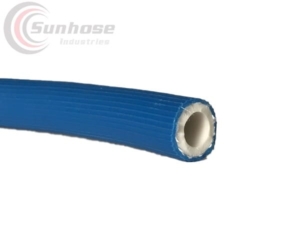The difference between PVC, UPVC, PP, and PE
PVC is Polyvinylchloride, the main component is PVC, and other ingredients are added to enhance its heat resistance, toughness, ductility, and so on. Or a polymer polymerized under the action of light and heat according to the mechanism of free radical polymerization. Vinyl chloride homopolymer and vinyl chloride copolymer are called vinyl chloride resin. It is a kind of synthetic material that is very popular and widely used in the world today.
The addition of plasticizers can reduce the temperature, facilitate processing at a lower temperature, increase the flexibility and plasticity of the molecular chain, and can be made into flexible soft products at room temperature, general soft plastic products. The extruder can be used to extrude the foreskin of PVC hoses, plastic wires, cables, and wires. Plastic sandals, soles, and slippers can be made by injection molding and various molds. PVC is mixed with stabilizers, lubricants, and fillers. After mixing, the extruder can be extruded into various caliber hard pipes, special-shaped pipes, and bellows, which can be used as sewers, diversion pipes, wire sleeves, or stair handrails.
Rigid PVC has good tensile, bending, compression, and impact resistance, and can be used as structural materials alone. The elongation at break and cold resistance of soft PVC will increase, but the brittleness, hardness, and tensile strength will decrease.
The difference between PVC and UPVC is that UPVC is not plasticized and has relatively high strength. UPVC has excellent chemical resistance in the whole working temperature range and has a wide working pressure band. Due to the long-term high strength characteristics, stiffness and cost-effectiveness, the UPVC system accounts for a considerable proportion of plastic pipe installation.
PP (polypropylene) is a colorless, odorless, non-toxic, translucent solid substance, a thermoplastic synthetic resin with excellent properties, and a colorless translucent thermoplastic light general plastic. Polypropylene is suitable for use in food, drinking water, and ultra-pure waters, as well as in pharmaceutical, chemical, and other industries.
PE (polyethylene) polyethylene has been successfully used for many years in the safe transportation of drinking water and wastewater, hazardous waste, and compressed gases.





 sunhose
sunhose